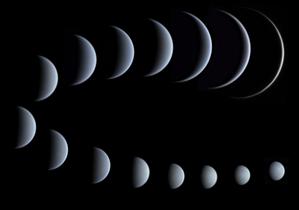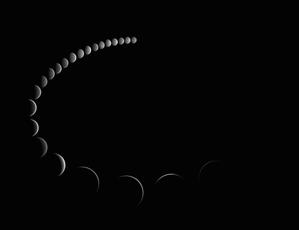Glossary term: 相位
Description: 在天文學中,相位是指衛星或行星相對於特定觀測者而言被部分照亮的狀態。遠處的光源通常只能照亮球體表面的一半,其餘部分仍然是黑暗的。同樣,在遙遠觀測者的視線範圍內,也只有球體表面的一半左右。相位決定了觀測者視線範圍內哪一部分表面被照亮。它隨著物體、觀察者和光源相對位置的變化而變化。
最廣為人知的例子就是月相。月球、作為觀測者的地球和作為光源的太陽的相對位置會隨著月球繞地球轉動而發生變化。因此,在這段時間裡,地球上的觀測者會看到不同的月相。在觀測者的視線中,月球表面全部被照亮的階段被稱為 "滿月";當看不到被照亮的表面區域時,是 "新月"。兩個被照亮一半的階段分別稱為 "上弦月"或 "下弦月"。照亮區域不足一半時為 "蛾眉月"。
太陽系中的行星也會出現相位(水星和金星尤其明顯),系外行星系統也會出現。對於月球來說,即使是沒有光照的區域也並非完全黑暗:它們會反射來自地球的光線,這種現象被稱為 "地球反照光"(Earthshine),最早由達芬奇記錄下來。
Related Terms:
See this term in other languages
Term and definition status: The original definition of this term in English have been approved by a research astronomer and a teacher The translation of this term and its definition is still awaiting approval
This is an automated transliteration of the simplified Chinese translation of this term
The OAE Multilingual Glossary is a project of the IAU Office of Astronomy for Education (OAE) in collaboration with the IAU Office of Astronomy Outreach (OAO). The terms and definitions were chosen, written and reviewed by a collective effort from the OAE, the OAE Centers and Nodes, the OAE National Astronomy Education Coordinators (NAECs) and other volunteers. You can find a full list of credits here. All glossary terms and their definitions are released under a Creative Commons CC BY-4.0 license and should be credited to "IAU OAE".
If you notice a factual or translation error in this glossary term or definition then please get in touch.
Related Media
角度問題
Credit: 克里斯托弗·巴埃斯/國際天文學聯合會教育辦公室 (CC BY 4.0)
License: CC-BY-4.0 Creative Commons 姓名標示 4.0 國際 (CC BY 4.0) icons
金星的相位
Credit: 斯特凡·岡薩雷斯/國際天文學聯合會教育辦公室 (CC BY 4.0)
License: CC-BY-4.0 Creative Commons 姓名標示 4.0 國際 (CC BY 4.0) icons
金星和水星的軌跡
Credit: 瑪塞拉-朱利亞-佩斯 (CC BY 4.0)
License: CC-BY-4.0 Creative Commons 姓名標示 4.0 國際 (CC BY 4.0) icons











